Abstract
The aim of the Teplice Program is to investigate and assess the impact of air pollution on the health of the population in the district of Teplice, Czech Republic. Characterization of the air pollutants demonstrated unusually high concentrations during winter inversions of fine particles dominated by acidic sulfates, genotoxic organic compounds, and toxic trace elements. The major source of airborne fine particles is the burning of coal for heating and power. Human exposure and biomarker studies demonstrated large seasonal variations in air pollution within the Teplice District and higher seasonal average pollution levels than the comparative district, Prachatice. Personal exposures to fine particles and organic carcinogens [e.g., polycyclic aromatic hydrocarbons (PAH)] were correlated with excretion of PAH metabolites in urine, several trace metals in blood, and DNA adducts in white blood cells. Respiratory and neurobehavioral studies of school children were conducted using questionnaires and clinical measures. A significantly higher prevalence of adverse respiratory symptoms and decreased lung function were found in the Teplice district than in Prachatice. The neurobehavioral studies indicated significantly higher teacher referrals for clinical assessment in Teplice, but the majority of objective performance measures did not differ. Reproductive studies were conducted in both males and females. A study of the effects of exposure on pregnancy and birth found an excess prevalence of low birth weight and premature births in Teplice; these adverse effects were more common in infants conceived in the winter and whose mothers were smokers. Based on questionnaires and medical examination, the reproductive development of young men was not different between districts and seasons, however, measures of semen quality suggest that exposure to high levels of air pollution are associated with transient decrements in semen quality.
Full text
PDF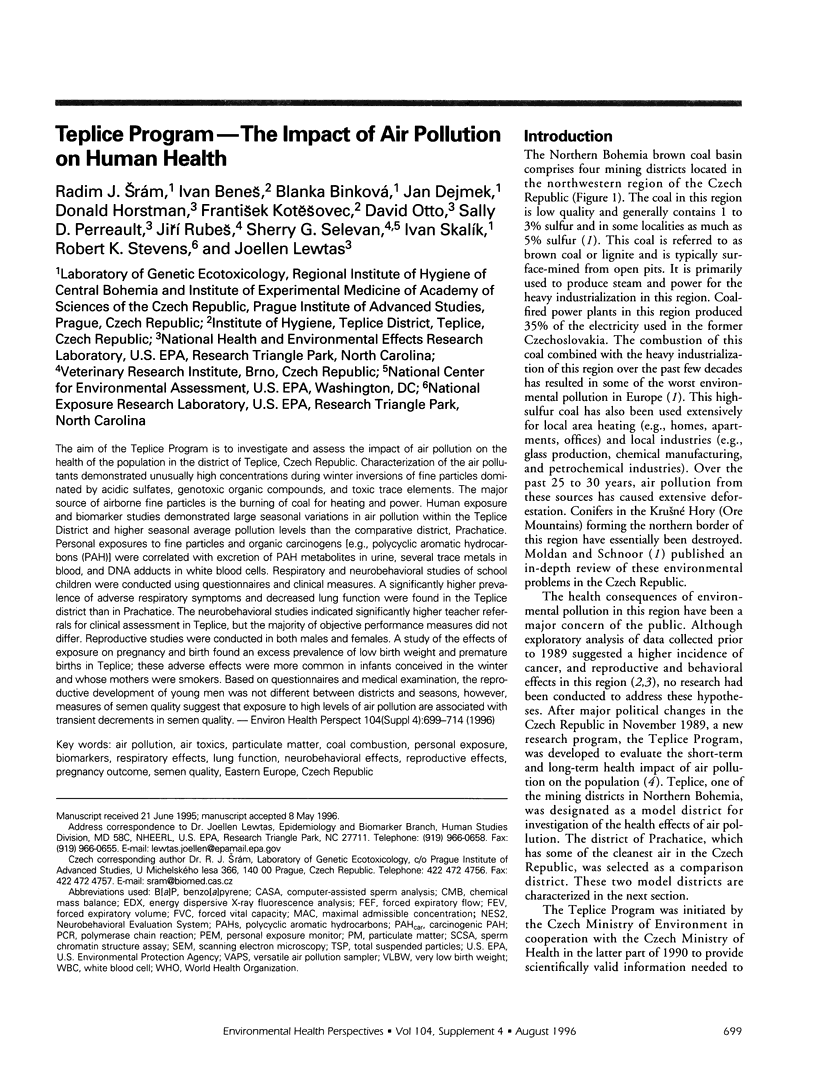
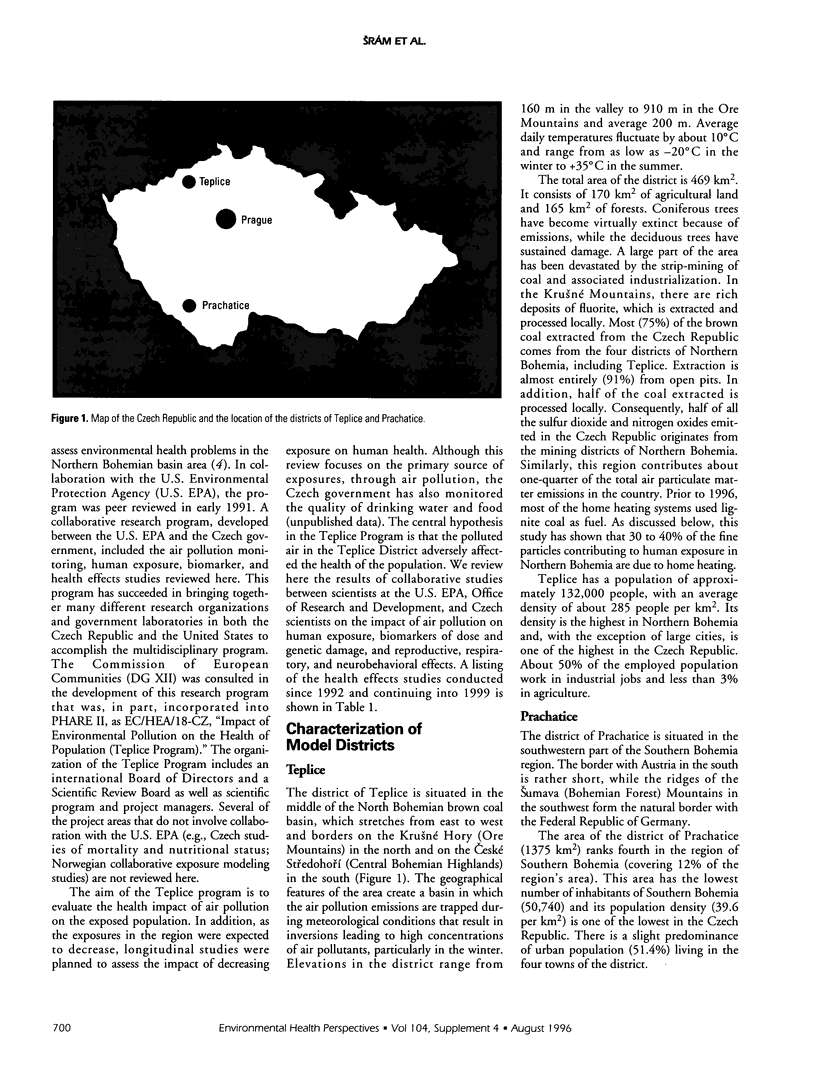
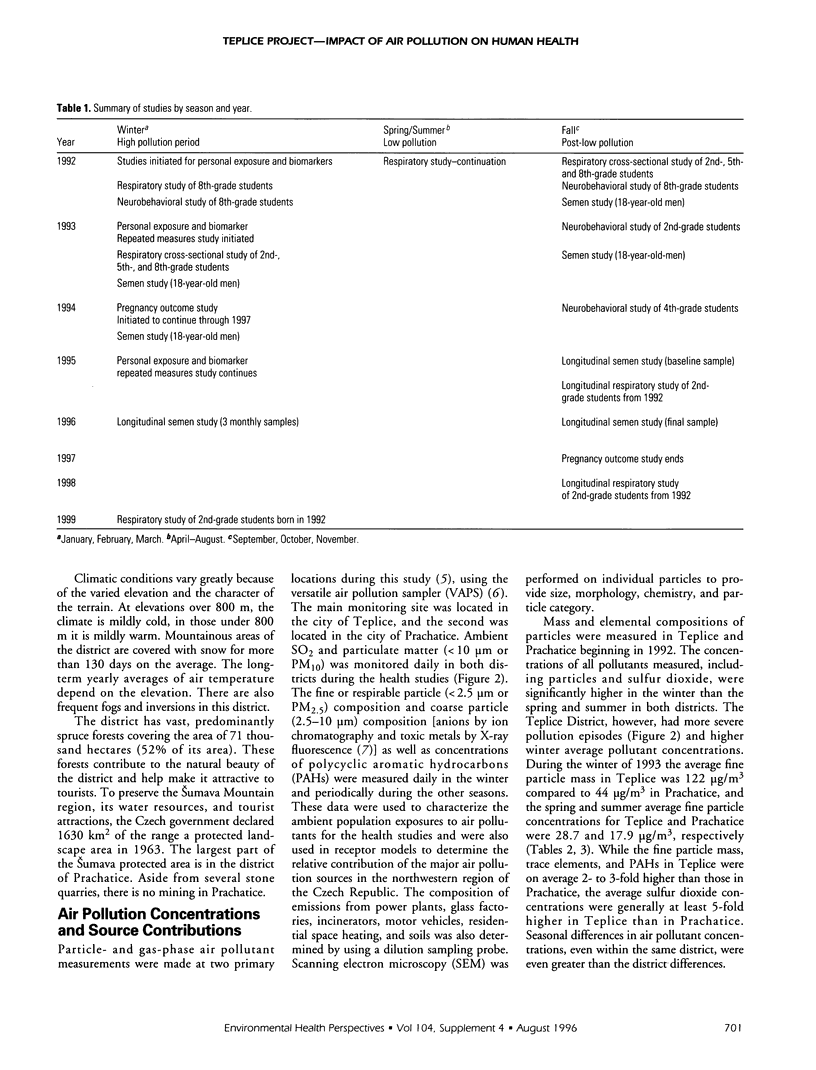
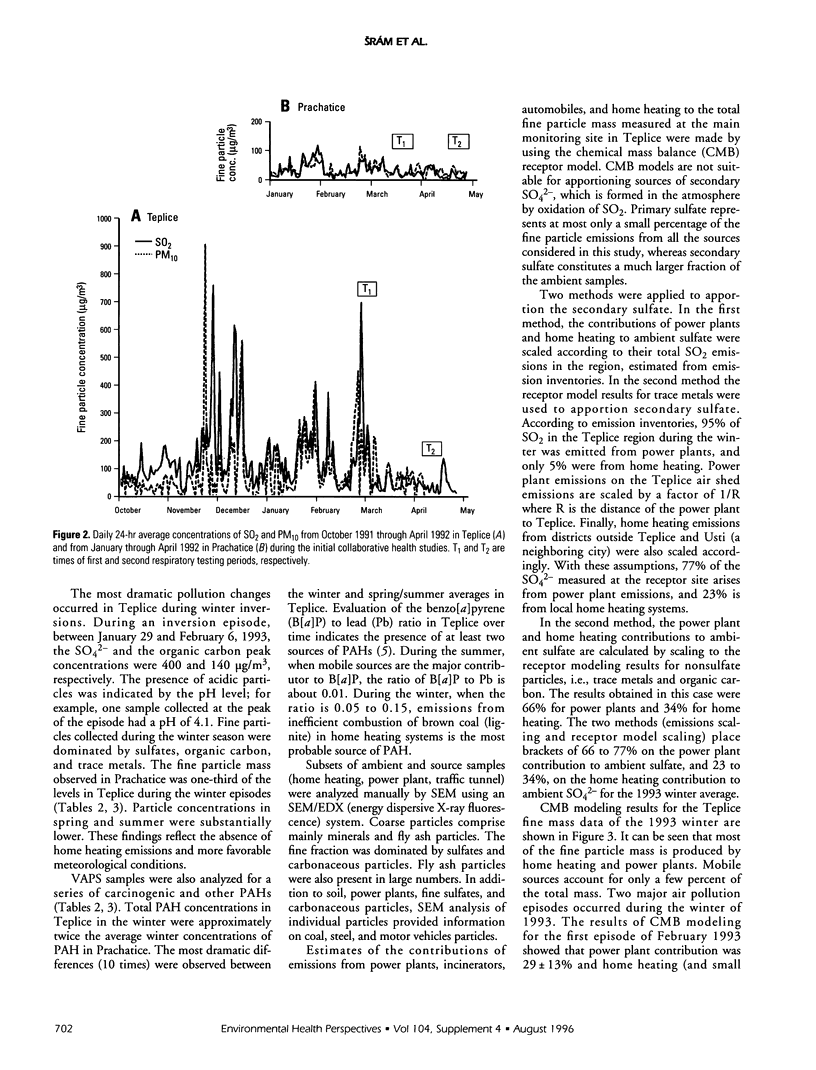
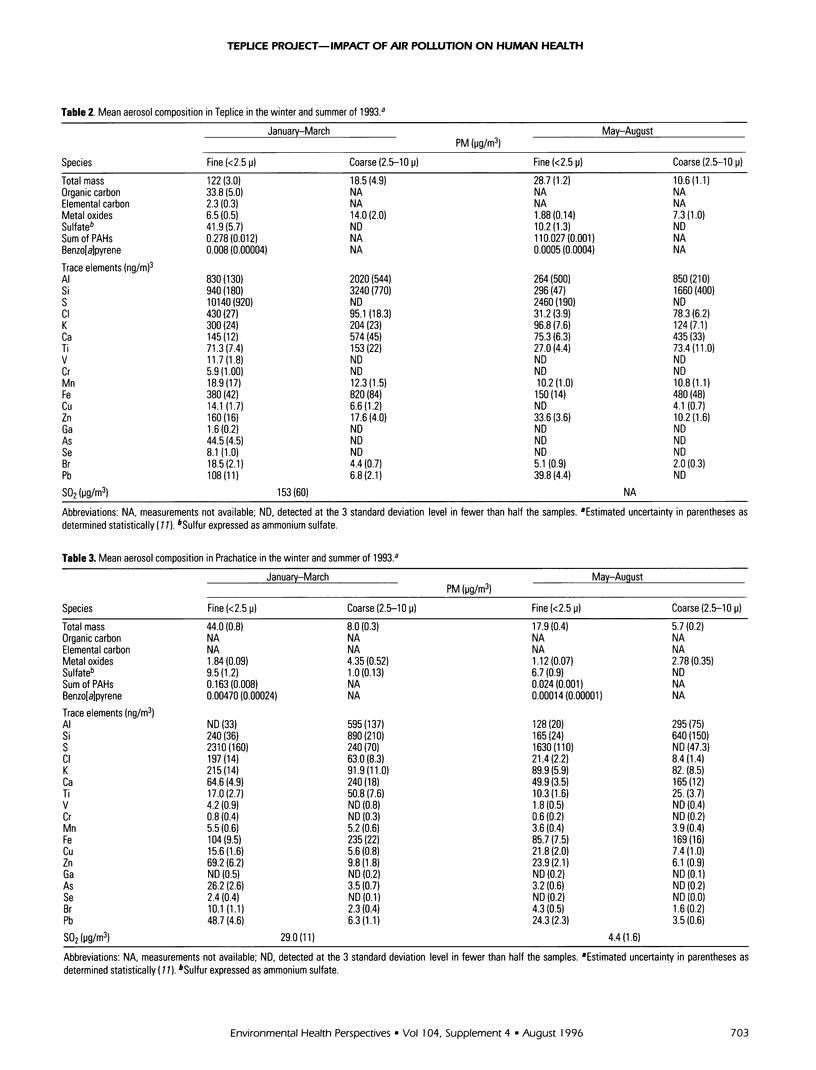
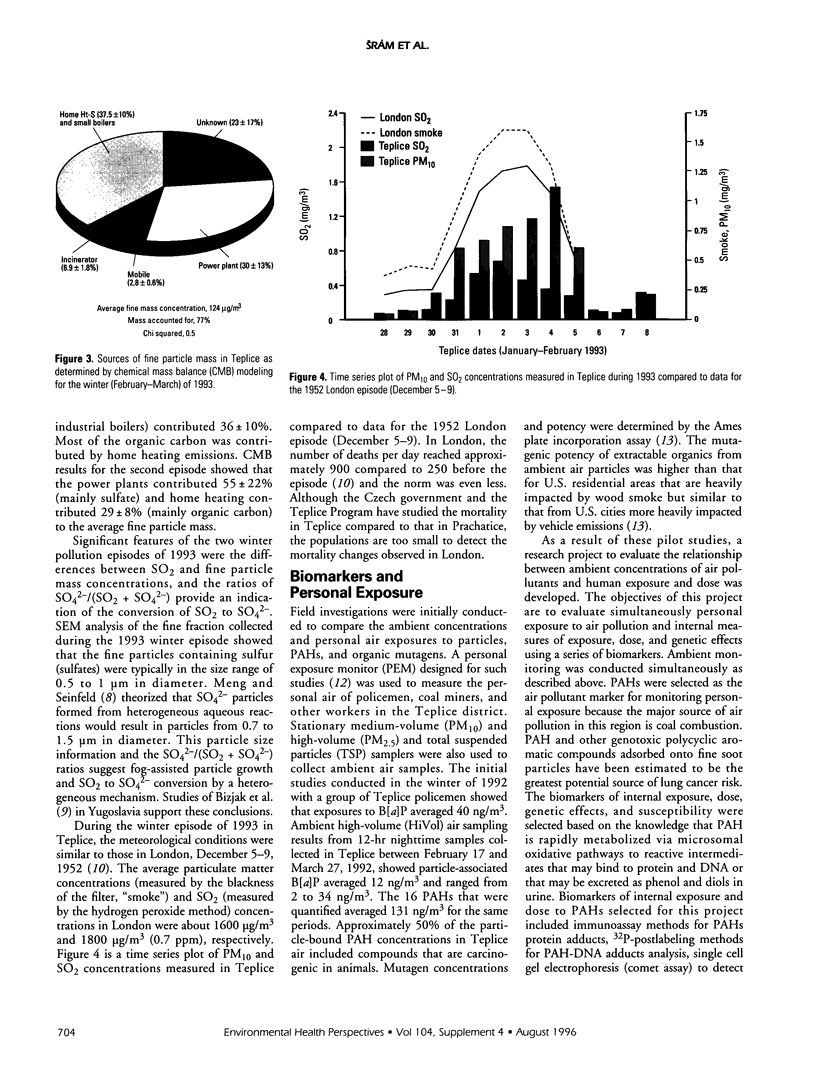
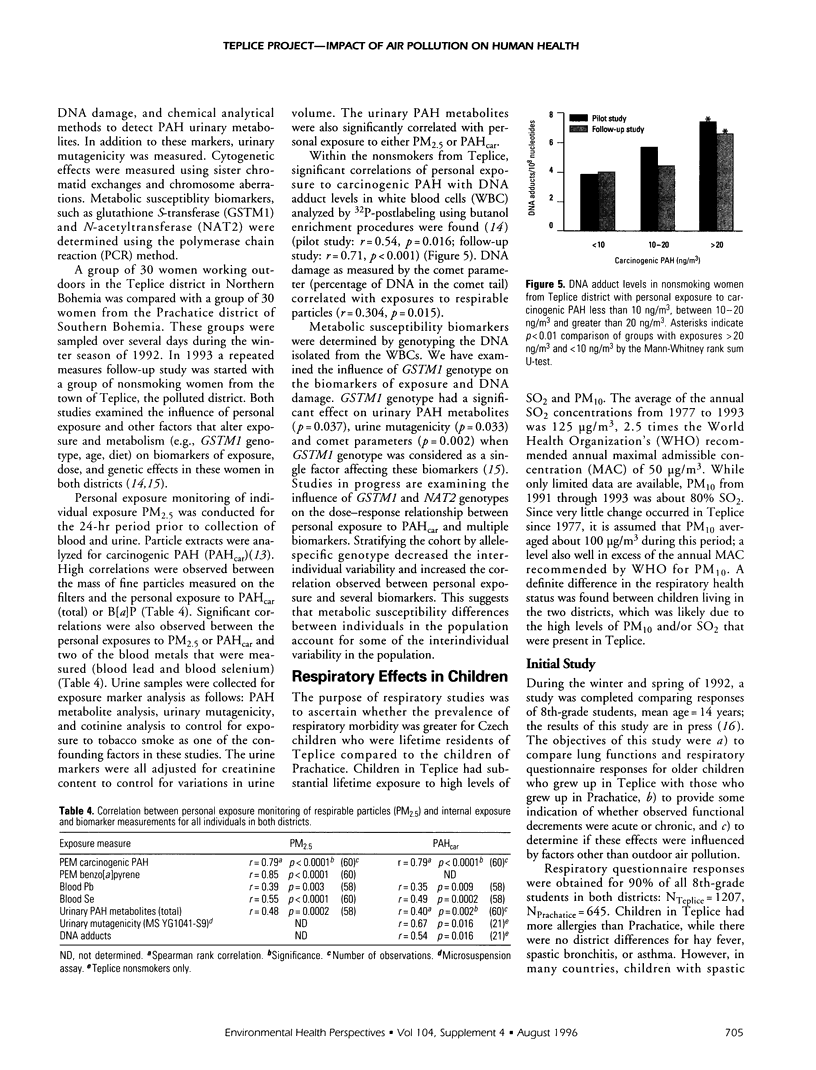
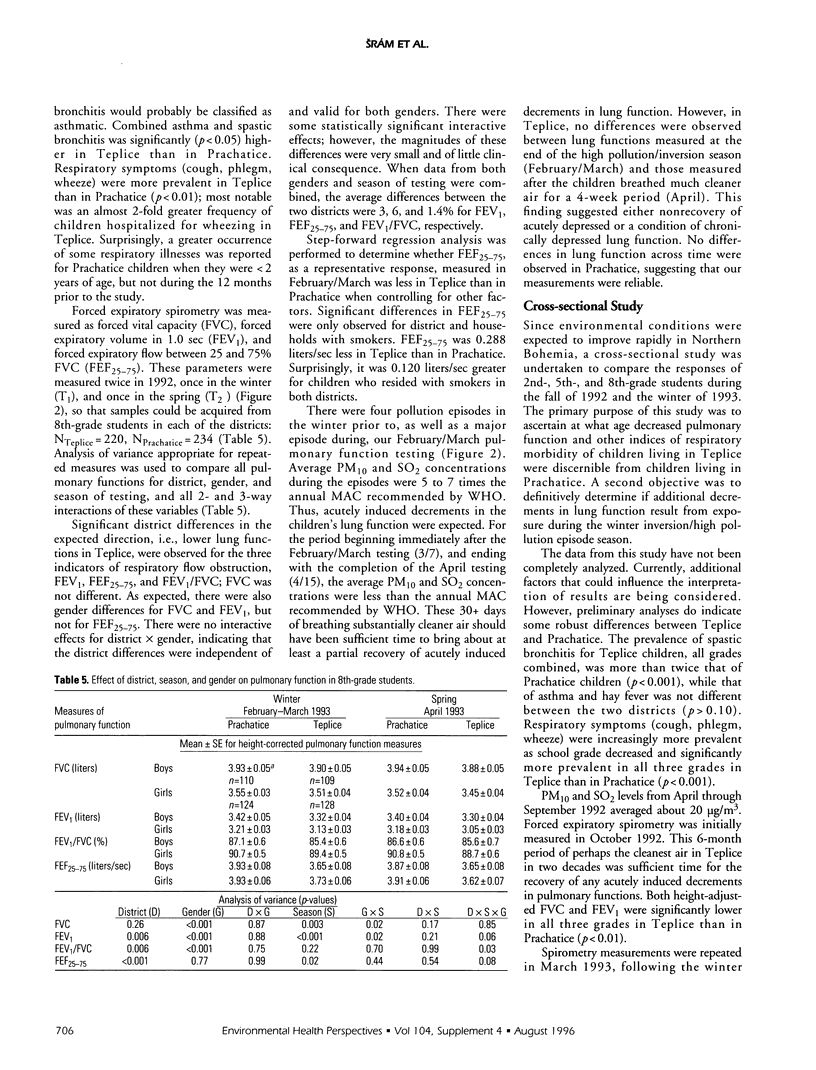
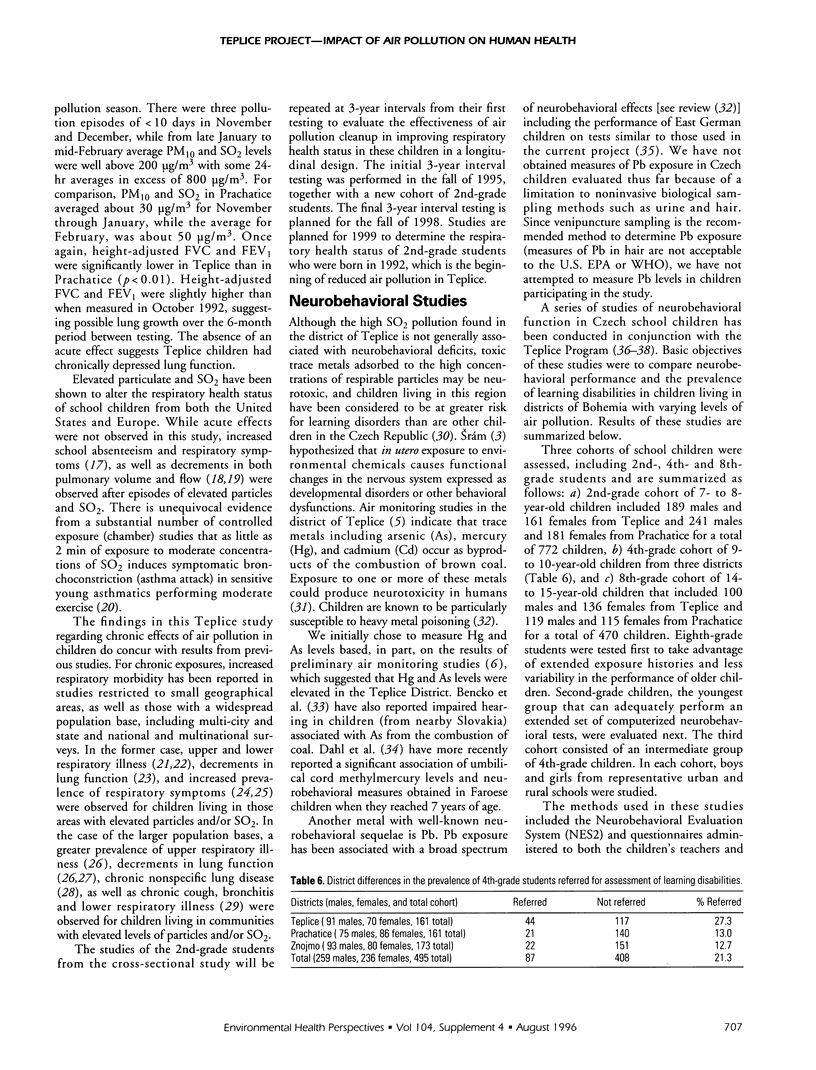
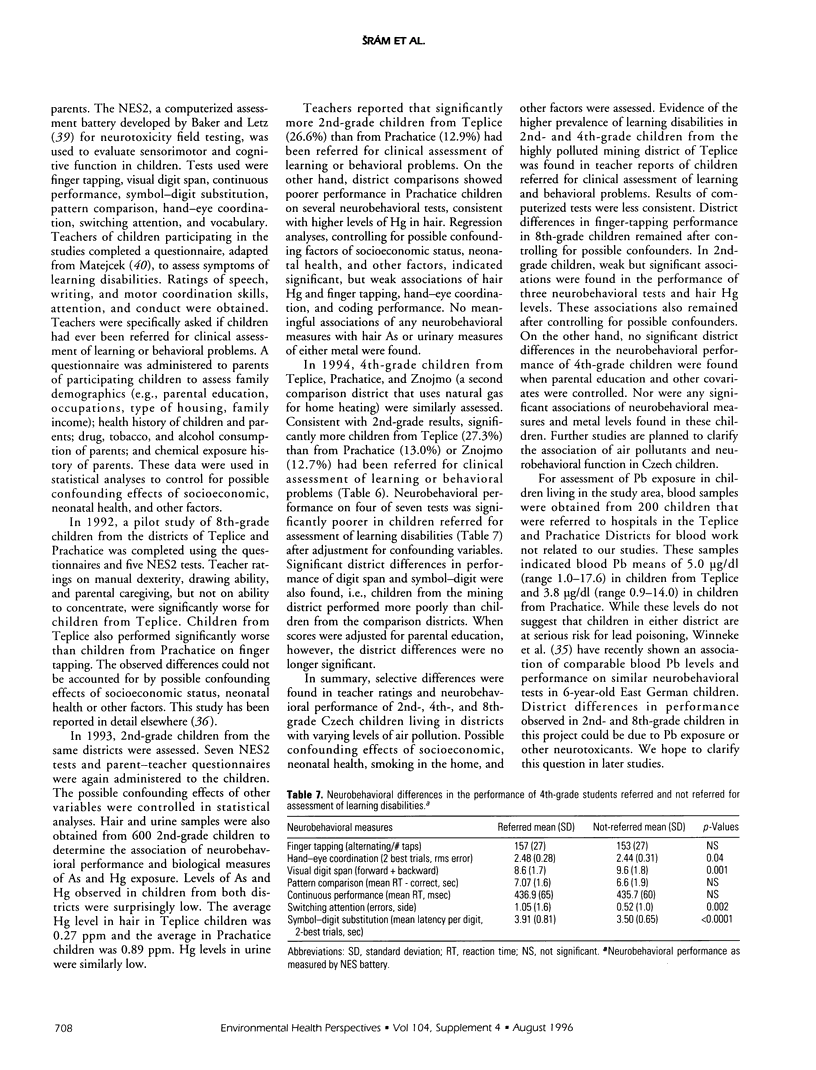
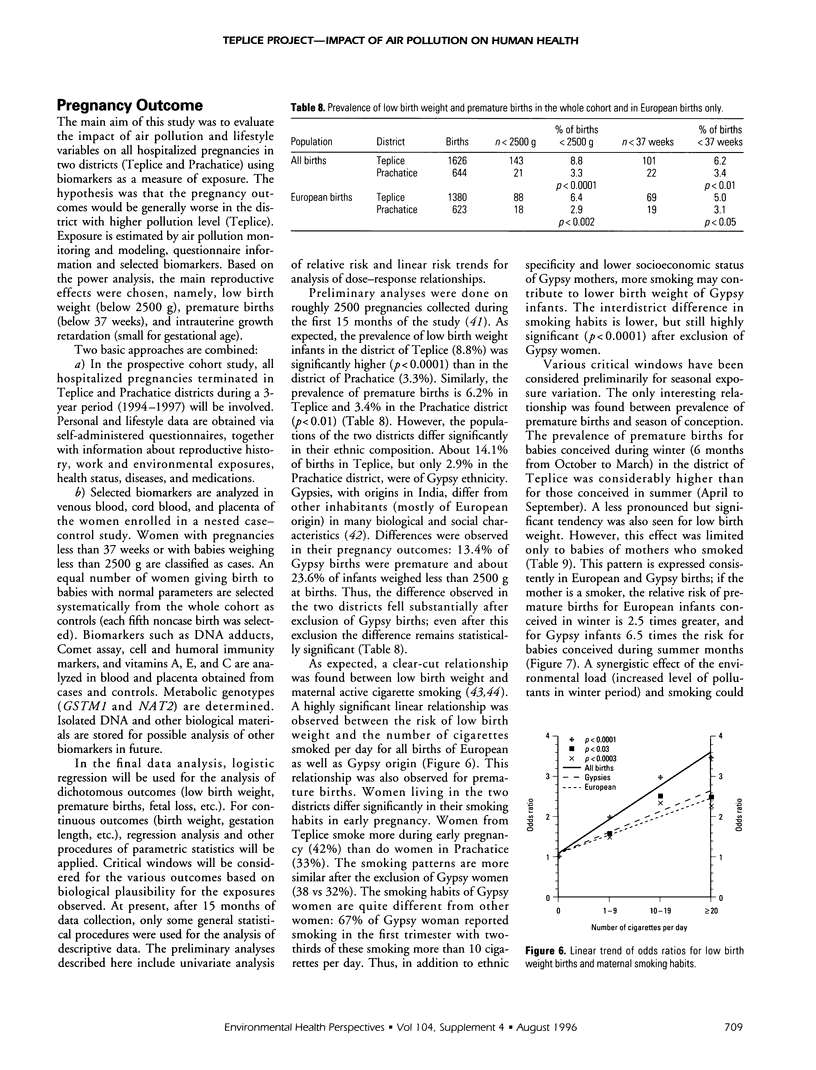
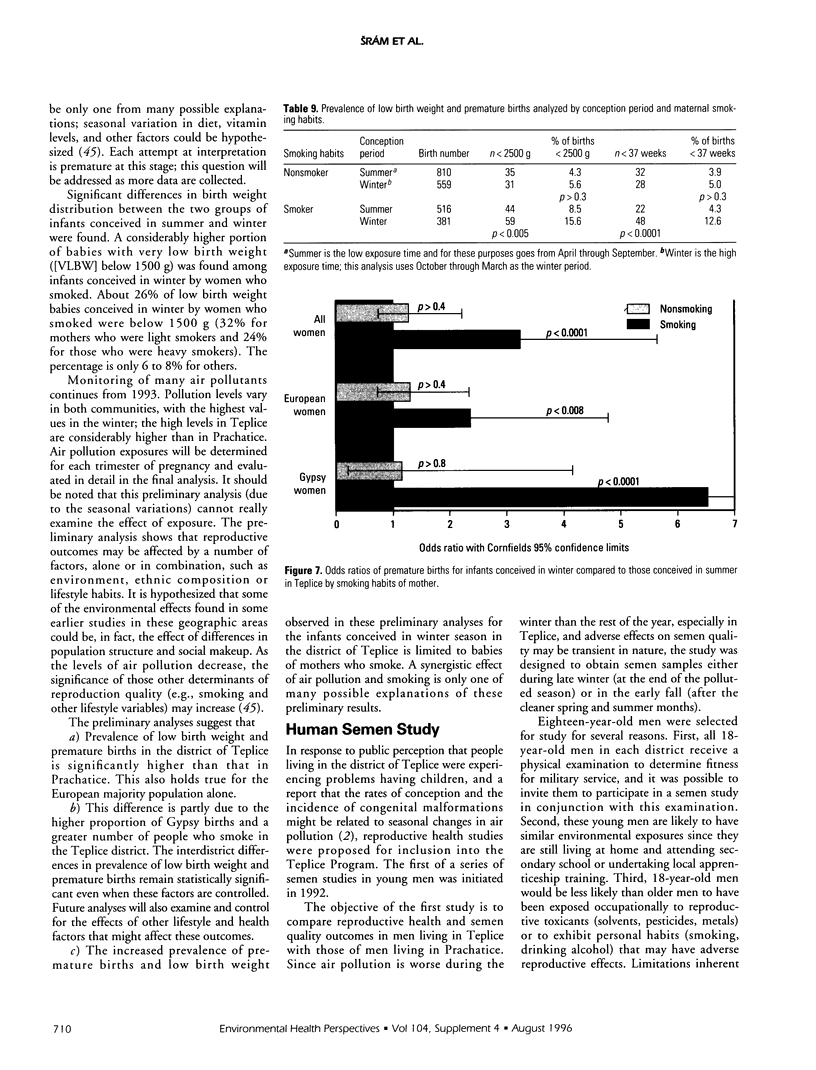
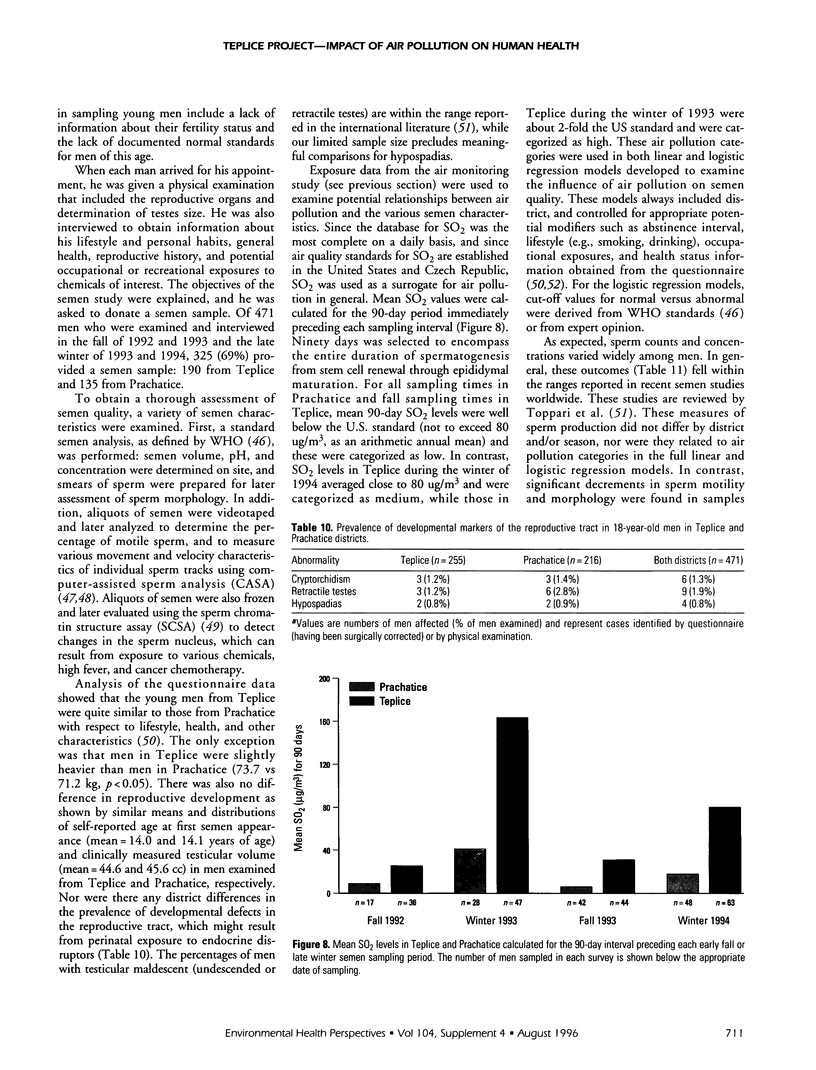
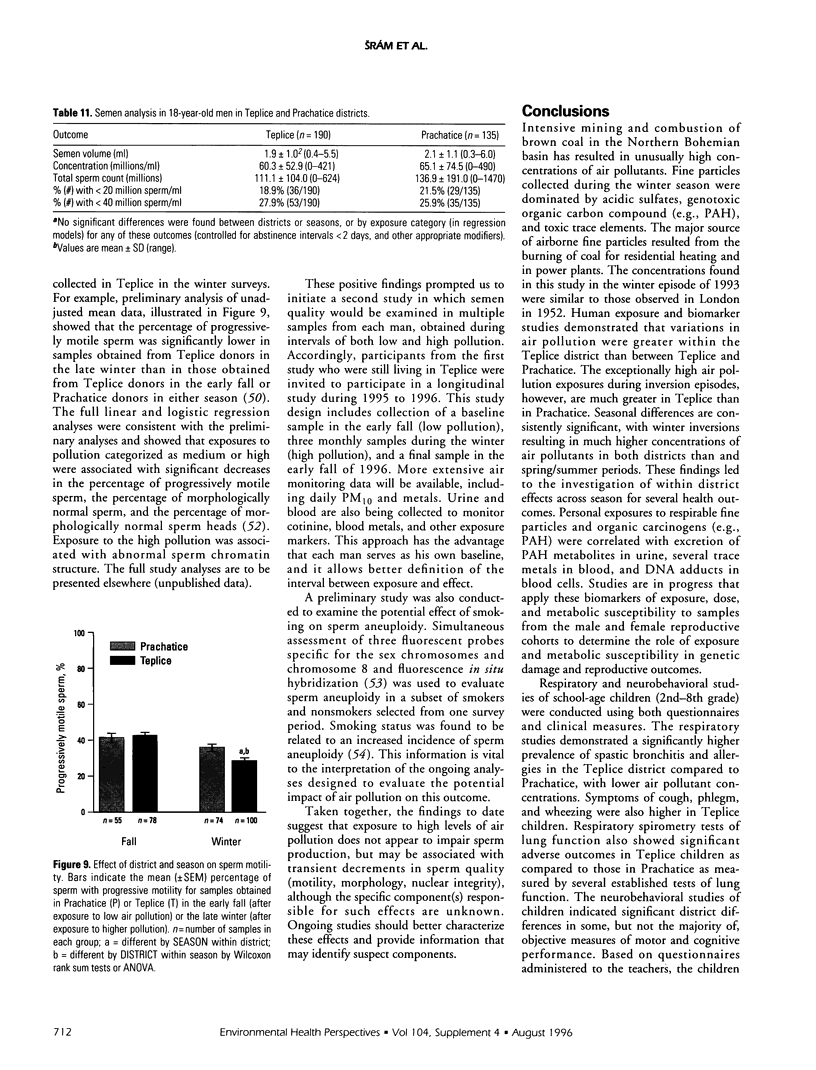
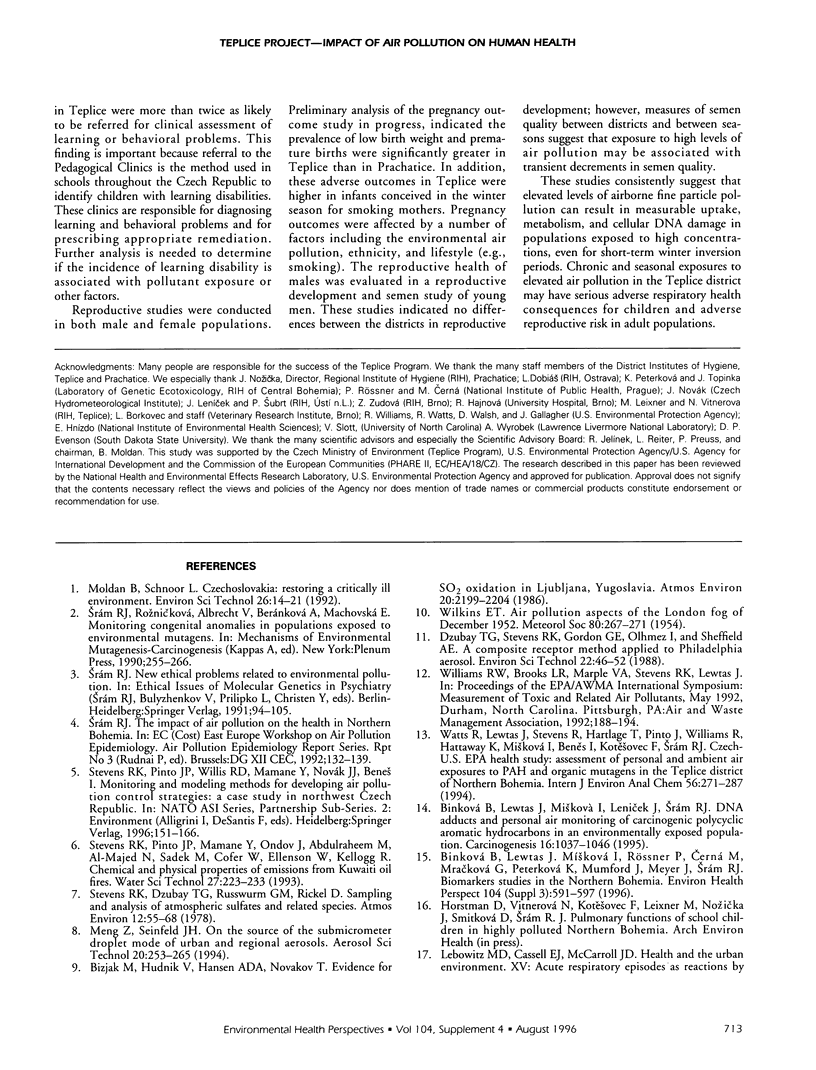
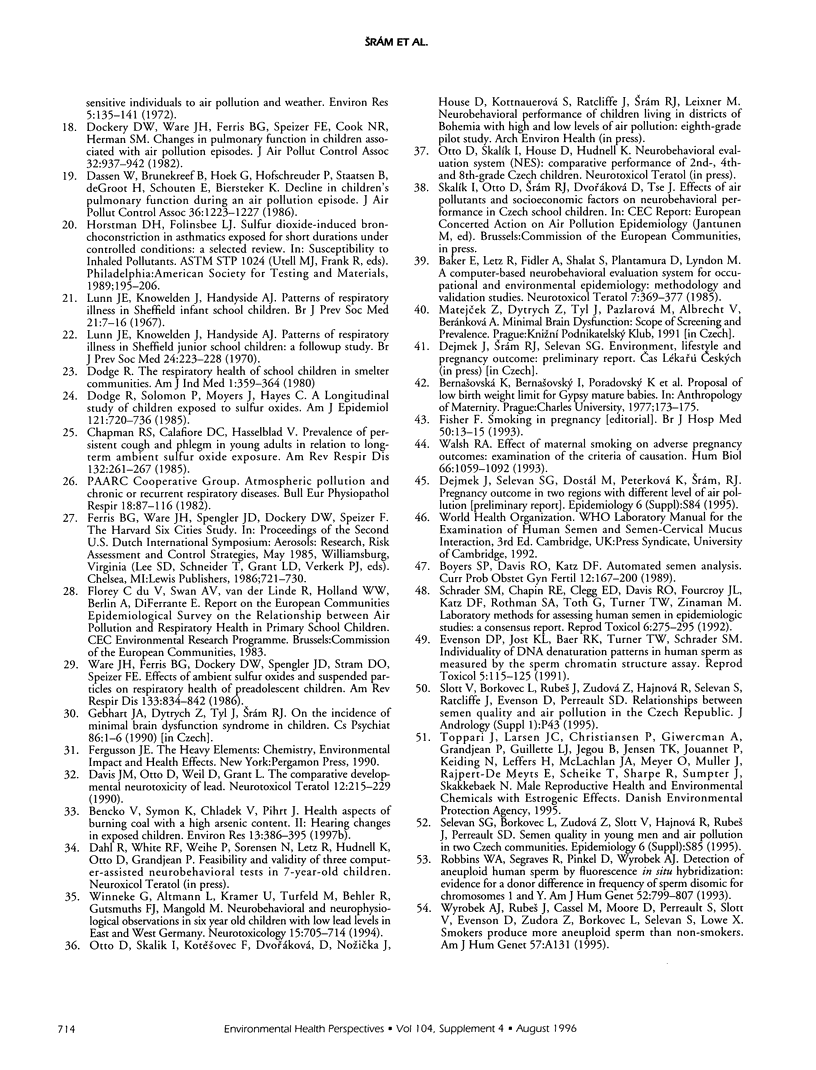
Selected References
These references are in PubMed. This may not be the complete list of references from this article.
- Baker E. L., Letz R. E., Fidler A. T., Shalat S., Plantamura D., Lyndon M. A computer-based neurobehavioral evaluation system for occupational and environmental epidemiology: methodology and validation studies. Neurobehav Toxicol Teratol. 1985 Jul-Aug;7(4):369–377. [PubMed] [Google Scholar]
- Bencko V., Symon K., Chládek V., Pihrt J. Health aspects of burning coal with a high arsenic content. II. Hearing changes in exposed children. Environ Res. 1977 Jun;13(3):386–395. doi: 10.1016/0013-9351(77)90019-6. [DOI] [PubMed] [Google Scholar]
- Binková B., Lewtas J., Misková I., Lenícek J., Srám R. DNA adducts and personal air monitoring of carcinogenic polycyclic aromatic hydrocarbons in an environmentally exposed population. Carcinogenesis. 1995 May;16(5):1037–1046. doi: 10.1093/carcin/16.5.1037. [DOI] [PubMed] [Google Scholar]
- Binková B., Lewtas J., Mísková I., Rössner P., Cerná M., Mrácková G., Peterková K., Mumford J., Meyer S., Srám R. Biomarker studies in northern Bohemia. Environ Health Perspect. 1996 May;104 (Suppl 3):591–597. doi: 10.1289/ehp.104-1469612. [DOI] [PMC free article] [PubMed] [Google Scholar]
- Chapman R. S., Calafiore D. C., Hasselblad V. Prevalence of persistent cough and phlegm in young adults in relation to long-term ambient sulfur oxide exposure. Am Rev Respir Dis. 1985 Aug;132(2):261–267. doi: 10.1164/arrd.1985.132.2.261. [DOI] [PubMed] [Google Scholar]
- Dassen W., Brunekreef B., Hoek G., Hofschreuder P., Staatsen B., de Groot H., Schouten E., Biersteker K. Decline in children's pulmonary function during an air pollution episode. J Air Pollut Control Assoc. 1986 Nov;36(11):1223–1227. doi: 10.1080/00022470.1986.10466168. [DOI] [PubMed] [Google Scholar]
- Davis J. M., Otto D. A., Weil D. E., Grant L. D. The comparative developmental neurotoxicity of lead in humans and animals. Neurotoxicol Teratol. 1990 May-Jun;12(3):215–229. doi: 10.1016/0892-0362(90)90093-r. [DOI] [PubMed] [Google Scholar]
- Dockery D. W., Ware J. H., Ferris B. G., Jr, Speizer F. E., Cook N. R., Herman S. M. Change in pulmonary function in children associated with air pollution episodes. J Air Pollut Control Assoc. 1982 Sep;32(9):937–942. doi: 10.1080/00022470.1982.10465494. [DOI] [PubMed] [Google Scholar]
- Dodge R., Solomon P., Moyers J., Hayes C. A longitudinal study of children exposed to sulfur oxides. Am J Epidemiol. 1985 May;121(5):720–736. doi: 10.1093/aje/121.5.720. [DOI] [PubMed] [Google Scholar]
- Dodge R. The respiratory health of school children in smelter communities. Am J Ind Med. 1980;1(3-4):359–364. doi: 10.1002/ajim.4700010312. [DOI] [PubMed] [Google Scholar]
- Evenson D. P., Jost L. K., Baer R. K., Turner T. W., Schrader S. M. Individuality of DNA denaturation patterns in human sperm as measured by the sperm chromatin structure assay. Reprod Toxicol. 1991;5(2):115–125. doi: 10.1016/0890-6238(91)90039-i. [DOI] [PubMed] [Google Scholar]
- Fisher F. Smoking in pregnancy. 1993 Jun 16-Jul 13Br J Hosp Med. 50(1):13–15. [PubMed] [Google Scholar]
- Lunn J. E., Knowelden J., Handyside A. J. Patterns of respiratory illness in Sheffield infant schoolchildren. Br J Prev Soc Med. 1967 Jan;21(1):7–16. doi: 10.1136/jech.21.1.7. [DOI] [PMC free article] [PubMed] [Google Scholar]
- Lunn J. E., Knowelden J., Roe J. W. Patterns of respiratory illness in Sheffield junior schoolchildren. A follow-up study. Br J Prev Soc Med. 1970 Nov;24(4):223–228. doi: 10.1136/jech.24.4.223. [DOI] [PMC free article] [PubMed] [Google Scholar]
- Robbins W. A., Segraves R., Pinkel D., Wyrobek A. J. Detection of aneuploid human sperm by fluorescence in situ hybridization: evidence for a donor difference in frequency of sperm disomic for chromosomes 1 and Y. Am J Hum Genet. 1993 Apr;52(4):799–807. [PMC free article] [PubMed] [Google Scholar]
- Schrader S. M., Chapin R. E., Clegg E. D., Davis R. O., Fourcroy J. L., Katz D. F., Rothmann S. A., Toth G., Turner T. W., Zinaman M. Laboratory methods for assessing human semen in epidemiologic studies: a consensus report. Reprod Toxicol. 1992;6(3):275–279. doi: 10.1016/0890-6238(92)90184-u. [DOI] [PubMed] [Google Scholar]
- Walsh R. A. Effects of maternal smoking on adverse pregnancy outcomes: examination of the criteria of causation. Hum Biol. 1994 Dec;66(6):1059–1092. [PubMed] [Google Scholar]
- Ware J. H., Ferris B. G., Jr, Dockery D. W., Spengler J. D., Stram D. O., Speizer F. E. Effects of ambient sulfur oxides and suspended particles on respiratory health of preadolescent children. Am Rev Respir Dis. 1986 May;133(5):834–842. [PubMed] [Google Scholar]
- Winneke G., Altmann L., Krämer U., Turfeld M., Behler R., Gutsmuths F. J., Mangold M. Neurobehavioral and neurophysiological observations in six year old children with low lead levels in East and West Germany. Neurotoxicology. 1994 Fall;15(3):705–713. [PubMed] [Google Scholar]


